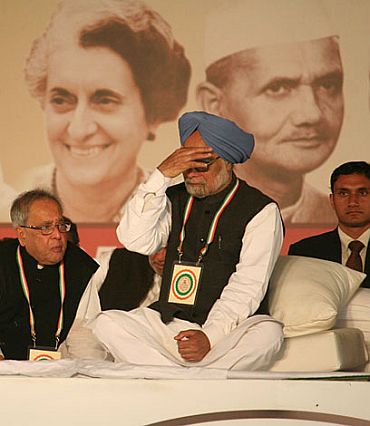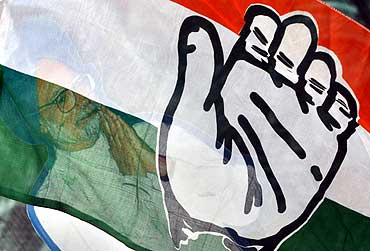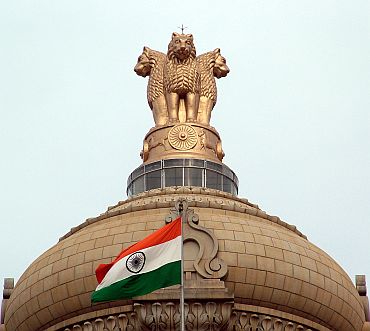 | « Back to article | Print this article |
Dr Singh needs a new team, not a reshuffle
If Prime Minister Manmohan Singh had not used the term "expansive" to describe the kind of reshuffle he would attempt after the Budget session of Parliament, expectations about what he is likely to do at this stage in the government's tenure may have been more subdued.
After all, he has done one round of reshuffle at the beginning of the year and he can afford to wait for some more time before reinventing and revitalising his government.
Despite the lingering bad odour of the second United Progressive Alliance government, it remains stable and enjoys adequate support in the Lok Sabha.
Moreover, the Opposition, Bharatiya Janata Party, is still unable to create a new platform for itself even when the government is offering so many opportunities, and the so-called Third Front is in disarray.
Govt's reputation has taken a beating
Heavens will not fall if the prime minister chooses to undertake only a minor reshuffle, filling vacancies that have arisen, leaving the existing team in place for a few more months.
However, apart from the fact that Dr Singh has raised expectations about the impending reshuffle, the mood of the opinion-making Indian middle class is so sullen and that of Indian business and enterprise so downbeat that the time may well be ripe for a major reconstitution of the UPA government, rather than a mere reshuffle.
The past ten months have seen the government's reputation take a beating repeatedly and the prime minister's image has been directly hurt. In politics it is all right to be loved or hated, but no one should risk the ignominy of ridicule.
That is the image problem that Dr Singh has to set right.
UPA has to reinvent its personality
A total overhaul of the Union Council of Ministers will end up upsetting some and pleasing others. The prime minister would revert to the acceptable status of being hated or loved, not ignored!
If he demonstrates that he is his own man, as he did when he stood his ground against the Left in 2007-08, some will hail him, some may denounce him, but few will ridicule him.
But the reasons for a reconstitution go well beyond the imperative of an image makeover. The time has come for the UPA to reinvent its platform and personality.
More competent and capable people need to take charge of the more important ministries, younger leaders of proven ability deserve leadership opportunities, and politicians and professionals with a cleaner reputation should be appointed in key economic ministries.
Is the PM ready to challenge existing power equations?
Sometimes, a thorough overhaul, including a new team on Delhi's Raisina Hill, helps impart a new image to the government. At the same time, it will re-empower the team's leader, giving the prime minister renewed confidence to act in the manner he wishes.
The UPA should realise that it cannot improve its own image, or that of the individual constituents of the alliance, including the Congress party, if it allows the prime minister's authority and image to weaken.
Admittedly, reshuffling portfolios is not just about improving a prime minister's image or a government's performance, it is also about changing power equations.
And it remains unclear whether either the prime minister or UPA chairperson Sonia Gandhi is ready to challenge existing power equations within the coalition and the Congress party.



